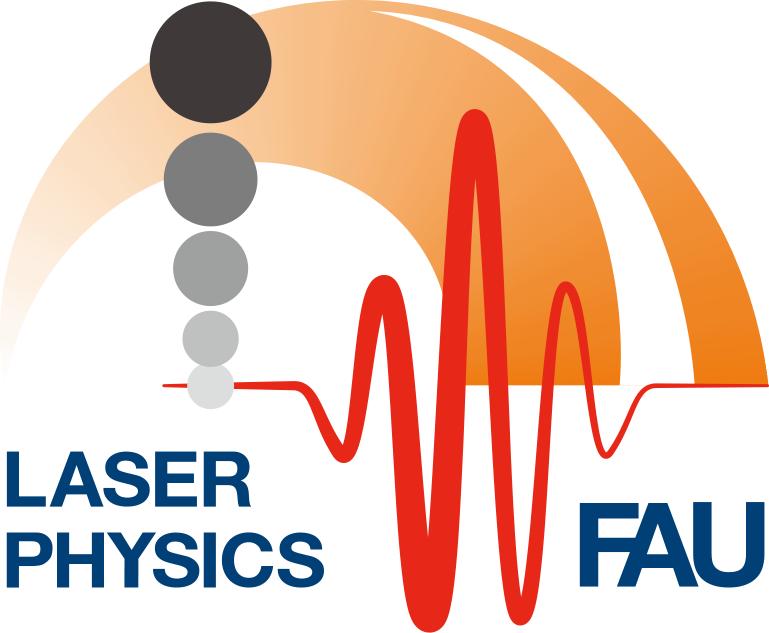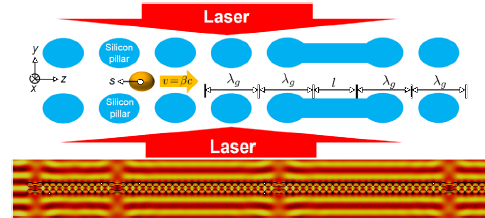Phys. Rev. Lett. publication on the stability of laser accelerators
Under the leadership of our theory partners at TU Darmstadt (working group of Prof. Dr. Boine-Frankenheim), a contribution to Phys. Rev. Lett. has just been published. We show theoretically that electrons can be accelerated with the help of nanophotonic structures and laser pulses without losing a large part of them. This is not self-evident at all, since during acceleration, so-called defocusing forces always act on the electrons, which could ensure that an electron beam is atomised. However, Dr. Uwe Niedermayer and his colleagues were able to show that it is possible to accelerate an electron beam and hold it together with the aid of optical forces; this requires very special structures that convert the laser fields into optical forces for acceleration and beam collimation. In this article, we first show that something like this can work, and show that with realistic electron beam parameters, a large part of the electrons can be accelerated from about 100 keV to 1 MeV. This type of particle accelerator on a chip could serve new types of radiation therapy or light sources in the future. This research is part of the ACHIP collaboration led by Erlangen and Stanford.

